Spark plugs are essential for engine performance. More than that, spark plugs are required to make your engine start at all. If you’ve ever gone shopping for spark plugs, you’ll notice that they come in several different materials. You’ll also quickly notice that there is a big difference in price. So, what’s the difference between them? Today, we’ll be discussing the types of spark plug materials.
Types of Spark Plug Materials
Spark plugs are intricate devices which conduct electricity to, quite literally, ‘spark’ the fuel needed for proper engine combustion. Spark plugs are generally made of a porcelain exterior casing and a metal core. The tip of the spark plug is composed of one of several types of metals, and it is this tip which labels the type of spark plug on the shelf.
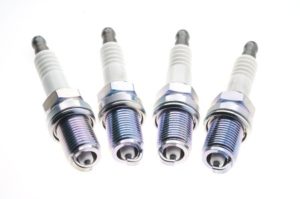 Normal: ‘Normal’ or ‘standard’ spark plugs are generally tipped with a copper coating. These wear down fairly quickly, with an average lifespan of 20,000 – 40,000 miles. The biggest benefits of copper-tipped spark plugs is that they are affordable and run at cooler temperatures than spark plugs with exotic metal tips.
Normal: ‘Normal’ or ‘standard’ spark plugs are generally tipped with a copper coating. These wear down fairly quickly, with an average lifespan of 20,000 – 40,000 miles. The biggest benefits of copper-tipped spark plugs is that they are affordable and run at cooler temperatures than spark plugs with exotic metal tips.- Iridium: Iridium-tipped spark plugs have a long lifespan, and average between 40,000 – 50,000 miles. They conduct electricity very efficiently, which provides more power to the engine than copper or platinum-tipped spark plugs. However, they are also the most expensive type of spark plugs.
- Platinum: Platinum-tipped spark plugs have the longest lifespan of all types of plugs, and can easily reach 100,000 miles before requiring a change. However, they do not conduct electricity as efficiently as iridium plugs, which means they do not provide as much power to your vehicle. They can also overheat in some conditions, unlike copper spark plugs.
- Double platinum: Spark plugs which are labelled as ‘double platinum’ feature additional platinum components in additional to the tip. The end result is a more efficient spark plug which can provide additional power to your vehicle. These types of spark plugs can last 100,000 miles between changes.
Specialty spark plugs, such as those used in race cars, may be made of materials not listed here.
Choosing Spark Plugs for Your Car
Before you head out to your local auto parts shop, check your manual to see what type of spark plug material your manufacturer recommends. Every car, truck, and SUV has manufacturer-recommended spark plugs optimized for long-term performance. These spark plugs are also ideal for the fuel type used as well as the temperature at which the vehicle runs.
 If you don’t have an owner’s manual, you can always find the specifications at your auto parts store. You will need to know the following information:
If you don’t have an owner’s manual, you can always find the specifications at your auto parts store. You will need to know the following information:
- Make of vehicle
- Model
- Year
- Number of cylinders
- Type of engine
- Transmission type
Signs Your Spark Plugs Might Need Replacing
Regardless of the types of spark plug materials used, all spark plugs eventually wear down and require replacement. All cars are different, and some vehicles are designed to minimize the number of times that spark plugs need replacing over the life of the vehicle. Check your owner’s manual to find the recommended schedule for your car.
If you’re not sure when your spark plugs were last replaced, you can always ask your mechanic to check them at your next tune-up. You might also take notice of the following signs that your spark plugs might need replacing:
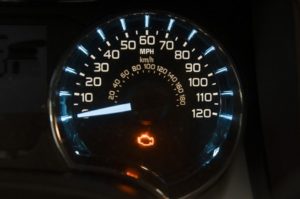 Engine is idling roughly
Engine is idling roughly- Engine is misfiring
- The dashboard shows a ‘check engine’ light that doesn’t seem to have an obvious cause
- Engine has difficulty starting
- Vehicle’s acceleration has noticeably decreased
- Vehicle’s fuel consumption has increased
Having the right spark plugs installed optimizes fuel efficiency, which in turn maximizes the life of the spark plug. Having the wrong type installed can lead to spark plugs wearing out quickly. In some cases, the incorrect type of spark plug in a car can lead to more severe problems such as the vehicle not starting at all.
If you need to have spark plugs replaced on a Toyota, Lexus, Nissan, or Infiniti vehicle in the Atlanta area, call T3 Atlanta.
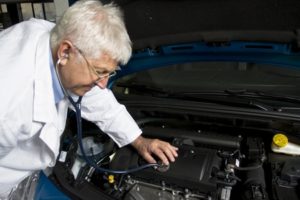 Maybe you’ve moved away and can no longer take your car to your trusted mechanic. Maybe you have recently purchased a brand that your mechanic does not service. Whatever the reason, you’re needing repairs and not sure about the quote you received. Perhaps it’s time to get a second opinion for car maintenance.
Maybe you’ve moved away and can no longer take your car to your trusted mechanic. Maybe you have recently purchased a brand that your mechanic does not service. Whatever the reason, you’re needing repairs and not sure about the quote you received. Perhaps it’s time to get a second opinion for car maintenance. Listen to your instinct. If you aren’t getting a good feeling about what you’re hearing, then don’t hesitate; listen to that feeling! There’s a good chance that you have that feeling for a reason. Move on to another mechanic.
Listen to your instinct. If you aren’t getting a good feeling about what you’re hearing, then don’t hesitate; listen to that feeling! There’s a good chance that you have that feeling for a reason. Move on to another mechanic. No one is looking forward to the next time they need to take their car into the mechanic for service. That said, when that time does arrive, you can be assured that the team at T3 Atlanta are comprised of award-winning experts who are prepared for any customer’s vehicle problem.
No one is looking forward to the next time they need to take their car into the mechanic for service. That said, when that time does arrive, you can be assured that the team at T3 Atlanta are comprised of award-winning experts who are prepared for any customer’s vehicle problem. Although cell reception is widespread these days, there are still large parts of the US which do not have reception. Having a backup is a great way to avoid getting lost. Most state border visitor information centers will have free maps. You can also download offline copies of maps to your smartphone or tablet for easy reference.
Although cell reception is widespread these days, there are still large parts of the US which do not have reception. Having a backup is a great way to avoid getting lost. Most state border visitor information centers will have free maps. You can also download offline copies of maps to your smartphone or tablet for easy reference.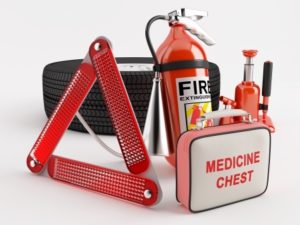 What to have in an emergency kit:
What to have in an emergency kit: Especially useful if you are travelling with kids, activities for the car will keep the young ones occupied so they aren’t constantly asking that age old question: “Are we there yet?”
Especially useful if you are travelling with kids, activities for the car will keep the young ones occupied so they aren’t constantly asking that age old question: “Are we there yet?” The vehicle condition refers to the overall state of the vehicle in relation to its age and use. This includes:
The vehicle condition refers to the overall state of the vehicle in relation to its age and use. This includes: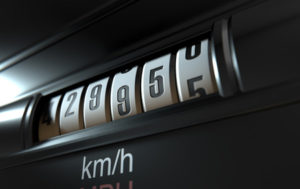 In more recent years, it has been argued that 100,000 is the new 200,000. Some cars seem to last forever, and more and more are appearing on used car lots with the odometer reading well over 90,000 miles.
In more recent years, it has been argued that 100,000 is the new 200,000. Some cars seem to last forever, and more and more are appearing on used car lots with the odometer reading well over 90,000 miles. Buying a used car is a great way to save some money while still finding the best fit for your needs. The experience can be very rewarding if you’re willing to do some extra legwork and have the patience to hold out for the right fit.
Buying a used car is a great way to save some money while still finding the best fit for your needs. The experience can be very rewarding if you’re willing to do some extra legwork and have the patience to hold out for the right fit. Despite what most people think, a car alignment has nothing to do with adjusting the tires or wheels. Instead, the alignment refers to how the suspension is adjusted, and how it makes the tire/wheel combination sit in relation to the road.
Despite what most people think, a car alignment has nothing to do with adjusting the tires or wheels. Instead, the alignment refers to how the suspension is adjusted, and how it makes the tire/wheel combination sit in relation to the road. A car that isn’t properly aligned doesn’t perform at its best. Poor alignment means you don’t enjoy handling that is as crisp as normal. Your vehicle will ride more roughly, negatively impacting comfort even if the road is smooth as glass.
A car that isn’t properly aligned doesn’t perform at its best. Poor alignment means you don’t enjoy handling that is as crisp as normal. Your vehicle will ride more roughly, negatively impacting comfort even if the road is smooth as glass. Uneven tire wear. Perhaps the most common sign, this includes the inside or outside edge of your tires wearing out faster than the rest of the tread. If both edges are worn down faster than the middle of the tread, that’s a sign you don’t keep your tires properly inflated.
Uneven tire wear. Perhaps the most common sign, this includes the inside or outside edge of your tires wearing out faster than the rest of the tread. If both edges are worn down faster than the middle of the tread, that’s a sign you don’t keep your tires properly inflated. When being honest, most people will ask: what is hydroplaning? Simply put, hydroplaning is when water that has accumulated on the road is high enough that it sits between your tires and the actual road surface. In other words, the rubber is no longer touching pavement, and the car is essentially skipping along.
When being honest, most people will ask: what is hydroplaning? Simply put, hydroplaning is when water that has accumulated on the road is high enough that it sits between your tires and the actual road surface. In other words, the rubber is no longer touching pavement, and the car is essentially skipping along.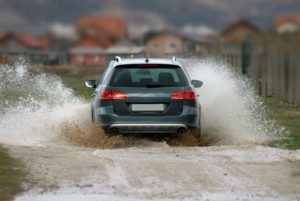 If it’s raining, or for some other reason you see water on the road, slow down. Don’t slam on the brakes, but do cut your speed significantly. Keep steering wheel movements gradual and not sudden.
If it’s raining, or for some other reason you see water on the road, slow down. Don’t slam on the brakes, but do cut your speed significantly. Keep steering wheel movements gradual and not sudden. First off, you shouldn’t panic if your car starts to hydroplane.
First off, you shouldn’t panic if your car starts to hydroplane.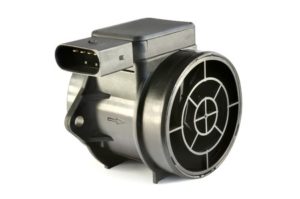 Check the mass air flow sensor, which can get dirty over time. This device measures exactly how much air is flowing into the engine. The car’s computer then uses that information to decide how much gasoline to use. Replacing a bad sensor will provide more accurate airflow data, which in turn means that your car will run more efficiently.
Check the mass air flow sensor, which can get dirty over time. This device measures exactly how much air is flowing into the engine. The car’s computer then uses that information to decide how much gasoline to use. Replacing a bad sensor will provide more accurate airflow data, which in turn means that your car will run more efficiently. First off, stop speeding. Going the speed limit or below actually optimizes fuel consumption. If you speed because you’re always late, make some lifestyle changes so you leave earlier.
First off, stop speeding. Going the speed limit or below actually optimizes fuel consumption. If you speed because you’re always late, make some lifestyle changes so you leave earlier. You can also improve your gas mileage when travelling outside of the city. When you go on trips, try packing lighter. You don’t need to take along everything but the kitchen sink, so don’t. Consider washing clothes if you’re going on a longer trip instead of packing enough for each day you’ll be gone. Some things you need can be purchased at your destination, which also cuts down on the weight you take along for the journey.
You can also improve your gas mileage when travelling outside of the city. When you go on trips, try packing lighter. You don’t need to take along everything but the kitchen sink, so don’t. Consider washing clothes if you’re going on a longer trip instead of packing enough for each day you’ll be gone. Some things you need can be purchased at your destination, which also cuts down on the weight you take along for the journey. The reasons for car electrical problems can be many. Your vehicle might have a loose electrical connection. A blown fuse will cause problems. Sometimes, it’s that one part of the system is constantly drawing power, even when the engine is shut off, and it slowly drains the battery.
The reasons for car electrical problems can be many. Your vehicle might have a loose electrical connection. A blown fuse will cause problems. Sometimes, it’s that one part of the system is constantly drawing power, even when the engine is shut off, and it slowly drains the battery.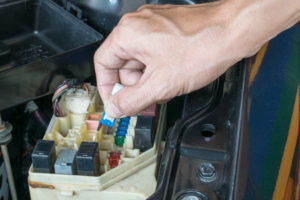 Blown fuses: When you constantly must replace blown fuses, this indicates something in the electrical system is sending too much current through those fuses.
Blown fuses: When you constantly must replace blown fuses, this indicates something in the electrical system is sending too much current through those fuses.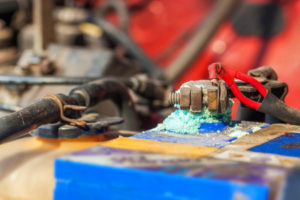 Pop the hood and inspect the battery. If the terminals have any white gunk or other debris on them, clean them thoroughly with a wire brush. Corrosion can bring your car’s electrical system to its knees. If that isn’t the cause, wiggle the battery cables to see if they’re loose.
Pop the hood and inspect the battery. If the terminals have any white gunk or other debris on them, clean them thoroughly with a wire brush. Corrosion can bring your car’s electrical system to its knees. If that isn’t the cause, wiggle the battery cables to see if they’re loose. Another source of water damage is cars comes from leaving a convertible top down or a sunroof/windows open during significant amounts of rain. Most people don’t really think about how much such a mistake can damage a car, which is why you should always leave everything closed up if there’s any risk of precipitation. If you’re driving and a surprise shower hits, it’s important to pull over and put the top up so that you can avoid long-term damage.
Another source of water damage is cars comes from leaving a convertible top down or a sunroof/windows open during significant amounts of rain. Most people don’t really think about how much such a mistake can damage a car, which is why you should always leave everything closed up if there’s any risk of precipitation. If you’re driving and a surprise shower hits, it’s important to pull over and put the top up so that you can avoid long-term damage.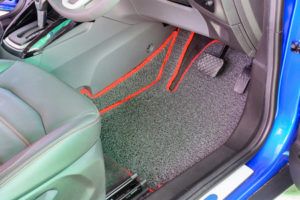 Check the interior and trunk for any signs of mud, rust, or other unusual debris. This can be hiding in the glove box, at the edge of carpeting, under the seats, under the dashboard, etc. Some stains on the seats can be from spilled drinks, but extensive staining possibly indicates the car has been damaged by water. If the carpeting looks newer than the rest of the car, or it fits loosely, that’s a sign it was replaced recently, possibly to cover up the water damage.
Check the interior and trunk for any signs of mud, rust, or other unusual debris. This can be hiding in the glove box, at the edge of carpeting, under the seats, under the dashboard, etc. Some stains on the seats can be from spilled drinks, but extensive staining possibly indicates the car has been damaged by water. If the carpeting looks newer than the rest of the car, or it fits loosely, that’s a sign it was replaced recently, possibly to cover up the water damage.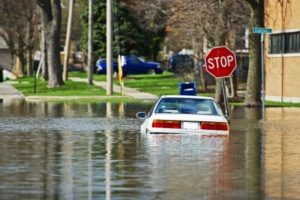 Water and engines don’t mix well. If your car has been submerged in water, the first thing to do is check the engine oil level on the dipstick. If the oil level is too high, you likely have water in the engine. Another sign is if the oil has turned milky, although that can also be caused by coolant mixing in.
Water and engines don’t mix well. If your car has been submerged in water, the first thing to do is check the engine oil level on the dipstick. If the oil level is too high, you likely have water in the engine. Another sign is if the oil has turned milky, although that can also be caused by coolant mixing in. Preparing your car for a summer road trip starts with addressing the most important elements on your vehicle. After surviving the brutalities of winter, your car needs some attention. These vehicle maintenance tips for summer driving address dormant problems before they become big issues and leave you stranded or worse.
Preparing your car for a summer road trip starts with addressing the most important elements on your vehicle. After surviving the brutalities of winter, your car needs some attention. These vehicle maintenance tips for summer driving address dormant problems before they become big issues and leave you stranded or worse.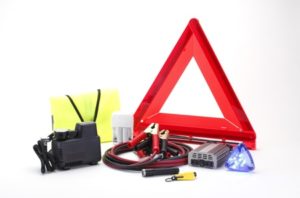 Most people think of winter when you mention survival kits, but kits for summer are just as important. A road trip survival kit for families can be the difference between being stranded without vital supplies, or being ready for the worst. Preparing your car for a summer road trip will help you tackle whatever might happen!
Most people think of winter when you mention survival kits, but kits for summer are just as important. A road trip survival kit for families can be the difference between being stranded without vital supplies, or being ready for the worst. Preparing your car for a summer road trip will help you tackle whatever might happen! Summer road trips are a lot of fun, especially if everything goes off without a hitch. If you head out prepared, you can have some peace of mind, knowing that if anything does happen, you can handle the situation.
Summer road trips are a lot of fun, especially if everything goes off without a hitch. If you head out prepared, you can have some peace of mind, knowing that if anything does happen, you can handle the situation.








